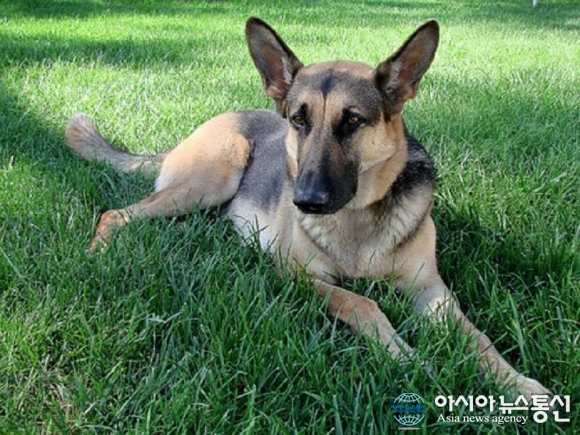 |
| Photo by: PublicDomainImages / Pixabay |
Fifty years ago this week, news from the war in Vietnam filled the pages of Norfolk’s newspapers.Readers of the Pilot learned of a very special homecoming that took place on the Little Creek Amphibious Base in Virginia Beach.Prince, a 65-pound, 4-year-old German shepherd donated by the Norfolk Police Department to locally based SEAL Team 2 and his handler, Signalman First Class Bill Bruhmuller successfully completed a historic six-month tour in the Mekong Delta.Prince was the first dog assigned to the SEALs and Signalman Bruhmuller pioneered the use of dogs by the SEALs.During his first tour, Prince is credited with tracking down and helping to capture four Viet Cong soldiers.
Years later, in an interview, with Orr Kelly, author of the book, Never Fight Fair!: Inside the Legendary U.S.Navy SEALs—Their Own True Stories, Bruhmuller, tells the story of how Prince found his way into the SEALs.
When we first went to Vietnam, we didn’t know the terrain or anything like that.I got the idea that maybe having a scout dog would be a pretty good idea.We heard about the army using them to great success.Our CO who was Bill Early, agreed to give it a try.
Because time was so short, the only place we could go for training was the Norfolk Police Department.The trainer was a super guy in the department named Bob Bouchard, who was later killed on a night-surveillance.They said sure, they would be glad to take us in, but the only training they could give was attack training and a little bit of surveillance.
They gave me a dog, Prince was his name.He was a good dog, very alert, very aggressive, very easily handled.Prince was a perfect SEAL.He could work hard and he could play hard.He was just one of those dogs that, at the end of the day, he could turn it off.And at eight o’clock in the morning he would go back to work again.
…When I jumped with Prince, I had to muzzle him.He would pretty well go anywhere I wanted to go.But he wasn’t too cool on jumping out of airplanes.He never really raised hell about it.He was an unusual dog.You could keep him calm.All you had to do was talk to him.Prince would stay calm.
This wasn’t going to be his lifestyle, jumping out of airplanes, but it seemed that he accepted it as part of the job.We were still together.He had that confidence I me.If I was doing it, it would be alright.
Bruhmuller goes on to detail what happened to Prince after they returned to the U.S.in June 1967.
Prince was turned over to another handler.That was the beauty of this particular dog.Most attack dogs or dogs of that sort, you can’t transfer handlers.But Prince was just that kind of personality.He could transfer over to another guy He transferred over to Mike Bailey.Mike took him down to official military training and then took him in country.
That time, the dog did an excellent job.He was wounded once.He saved their platoon on numerous occasions by alerting.
Prince made three tours of Vietnam, and in March 1970, Prince stood at attention on the parade grounds at the Amphibious Base and received two Purple Hearts for wounds suffered during his service.Prince’s awards were an exception made by Adm.Elmo Zumwalt, Chief of Naval Operations –designate, as military law at the time stated that only humans could receive Purple Heart awards.
Prince, now 7 years old, was all set to retire to a farm in Iowa when news of his decorations reached the Pentagon.
The awards and publicity proved to be Prince’s undoing.Prince’s SEAL Team was unaware of a government policy forbidding war dogs returning to this country from Southeast Asia.It was believed the dogs carried a communicable blood disease that could be spread to other animals.
The executive director of the Norfolk SPCA, Mrs.Mary Francis Morrisette, stepped in and volunteered to spearhead a move to prevent military officials from returning the dog to a permanent exile overseas. “Prince is a U.S.war hero.He deserves the best treatment he can get and deserves to be allowed to remain at home” Morrisette said at the time.The movement and public outcry was ineffective.
In June 1970, Prince and three other German shepherds –Rennie, Dusty and Zepp were loaded onto a transport plane at the Norfolk Naval Air Station, flown back to Vietnam, and placed back into service.
In May 1971, news of Prince hit the papers again when a spokesman for SEAL Team 2 who recently returned from Vietnam, said that he did not find Prince working with military units – contrary to what the Pentagon had stated when it announced that the twice decorated K-9 was alive and well, working with SEALs in Vietnam.
In the eleven months after the dogs returned to mandatory service, the Pentagon announced that all war dogs could return to the U.S.from Vietnam.It seems the mysterious blood disease could not be directly attributed to the dogs after all.
The news came too late for three of the dogs.Dusty was killed in action and Zepp and Rennie had to be put down for medical reasons.
The Pentagon stated that Prince was eligible for return to the US if his medical records showed he was disease-free.
What happened to Prince?The last sentence of the last story in our file reads:
“All Prince has to do now is dodge some more bullets, make the right connections and if all goes well---maybe.”
Master Chief Bruhmuller, had an incredible career in the Navy and retired in 1978 with two purple hearts. He died in Florida on September 23, 2016, at the age of 81.
Prince at rest during his Purple Heart ceremony at the Little Creek Amphibious Base in March 1970.














